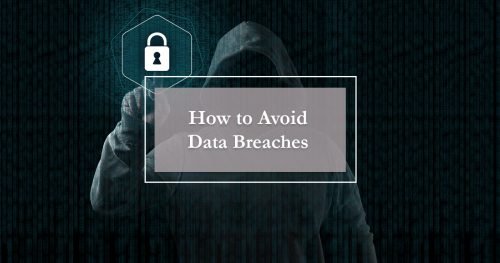How to Avoid Data Security Breaches

Yahoo, First American Financial Corporation, Facebook, Marriott, Adobe, and eBay have one thing in common. They are industry leaders who have lost millions of dollars in recent data security breaches.
A data breach is an incident where confidential or sensitive information is accessed without permission. It is the result of a cyberattack which enables cybercriminals to gain access to a computer system or network. As a result, they can easily steal personal and financial data.
In addition to significant revenue loss, data security breaches can negatively impact your brand reputation. They also entail hidden costs such as legal fees, PR and investigation expenses, and insurance premium hikes.
If you wish to protect your organization from these consequences, here are five effective ways to achieve stronger cybersecurity and resilience.
1. Educate Your Employees on Data Security Breaches
According to 2020’s Verizon Business Data Breach Investigations Report (DBIR), one in five (22%) of breaches were caused by human error.
The most common error is sending sensitive information to the wrong person. Equally dangerous is misconfiguration, which is a risk that leaves a wealth of sensitive information unprotected online.
To counter these issues, it’s important to train your employees on adhering to your security policy. Some aspects your employees should be aware of include:
- Controlling user access and privileges
- Using unique passwords on all devices used for work purposes
- How to detect and report suspicious data security leaks
- Handling, disposing, retrieving and sending data
2. Carry Out Regular Asset Inventories
Asset inventories are the foundation of every cybersecurity program. Without them, managing compliance and cyber risks may be difficult if not impossible.
An asset inventory ensures visibility into your organization’s hardware and software assets. It can further be used for building categories and assigning ratings to asset vulnerabilities and threats. That way, you can prioritize remediation efforts accordingly.
3. Plan and Conduct Security Posture Audits
One of the best practices of cybersecurity is validating your security posture through regular audits. These thorough assessments go beyond vulnerability assessment and penetration testing to identify potential gaps in compliance or governance.
Some of the factors analyzed during these audits are:
- Documented information security policies
- Availability of a management process, escalation profiles, and a playbook for incidents or breaches
- Security and log monitoring
- Network security mechanisms such as firewalls
- Disaster recovery and business continuity plans
4. Keep a Closer Eye on the Use of Shadow IT
Shadow IT has become a major risk. The use of IT-related hardware or software without the knowledge of IT or security professionals is providing opportunities to cybercriminals.
Not all IT companies have a disciplined approach to updating or patching their products. Therefore, using these products may lead to an organization losing control over its data. This, in turn, makes confidential information unprotected and susceptible to all kinds of data breaches.
In addition to monitoring devices, here are some recommendations to curb this risky behavior.
- Establish a policy where employees can share innovative IT solutions that increase their productivity. However, make sure to audit the risk of these solutions before allowing their use.
- Create a list of approved software and hardware. That way, your employees can know what to use and what to avoid.
- Provide ongoing IT security training and checklists. Doing so will get everyone involved in protecting the organization’s data.
5. Add Physical Security to Your Data Security Breach Protection Strategy
While public clouds are mainly used for storing most business data, there’s still a considerable amount of data on onsite servers. If your office building is empty, cybercriminals may decide to target you next. Some of the ways they can attack include:
- Gaining access to the server room and taking control of your networks
- Stealing or damaging server hard drives
- Installing rogue devices with the help of existing employees
The best way to prevent these is by reducing unauthorized access into the server room. For instance, you can use biometric scanners or entry system protections. Moreover, if the data stored is extremely sensitive, consider having a security guard protecting it.
Bonus Tip – Formally Train Your Employees on Cybersecurity
Having at least one cybersecurity professional can make a huge difference. In addition to keeping intellectual property secure and confidential, they’ll be more proactive in protecting against cyber-attacks.
If that professional has a cybersecurity certification to their name, your organization will be secured by best practices, tools, and methods.
LearningCert can help you with this. We offer a wide range of cybersecurity certification training courses to equip professionals with vital skills and prepare them for certification exams. From CISSP to ISO 27001 Lead Implementer, courses are available in various formats to best suit your workforce’s learning needs.
Need more information? Contact our Training Advisors with your questions today.




